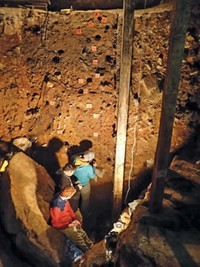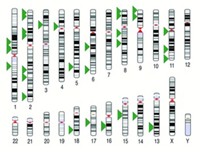Advertisement
Grab your lab coat. Let's get started
Welcome!
Welcome!
Create an account below to get 6 C&EN articles per month, receive newsletters and more - all free.
It seems this is your first time logging in online. Please enter the following information to continue.
As an ACS member you automatically get access to this site. All we need is few more details to create your reading experience.
Not you? Sign in with a different account.
Not you? Sign in with a different account.
ERROR 1
ERROR 1
ERROR 2
ERROR 2
ERROR 2
ERROR 2
ERROR 2
Password and Confirm password must match.
If you have an ACS member number, please enter it here so we can link this account to your membership. (optional)
ERROR 2
ACS values your privacy. By submitting your information, you are gaining access to C&EN and subscribing to our weekly newsletter. We use the information you provide to make your reading experience better, and we will never sell your data to third party members.
Analytical Chemistry
Reading The Neanderthal Code
German-U.S. collaborative effort embarks on project to sequence the Neanderthal genome
by Celia Henry Arnaud
August 14, 2006
| A version of this story appeared in
Volume 84, Issue 33

Another day, another genome project. But this one is definitely not your average genome project. In fact, the species in question has been extinct for thousands of years.
Last month, Max Planck Institute for Evolutionary Anthropology, in Leipzig, Germany, and 454 Life Sciences, in Branford, Conn., announced their plans to sequence the Neanderthal genome.
The researchers, led by evolutionary anthropologist Svante Pääbo, hope to fill in the gaps in our understanding of human evolution by looking at our cousins, the Neanderthals. "We need to compare ourselves to our most recent common ancestor, which happens to be extinct," Pääbo said at a webcast press conference announcing the project.
Among living species, humans share their nearest common ancestor with chimpanzees, which branched off evolutionarily at least 5 million years ago. Neanderthals split off much more recently, somewhere around a half-million years ago. The first Neanderthal fossils were discovered 150 years ago in Germany's Neander Valley.
Most analyses of ancient DNA have been done with mitochondrial DNA, but for this project Pääbo and his collaborators will sequence Neanderthal nuclear DNA. Pääbo's group will be responsible for extracting the DNA, whereas the actual sequencing will take place at 454's labs.
The team faces a tough challenge wading through the rest of the DNA in the samples. Because fossil samples are contaminated with microbial DNA and are often chemically degraded, only about 6% of the extracted DNA will be Neanderthal. As much as 2% of that putative Neanderthal DNA could be contamination from modern humans. They estimate that they will need to sequence about 70 billion base pairs to piece together the 3.2 billion-base-pair Neanderthal genome.
Even so, they won't be able to completely reconstruct the Neanderthal genome from scratch. The samples won't be large enough to get the sequencing coverage required to assemble the Neanderthal genome in the same way the human genome was assembled. "There will be some portions where there are holes that we missed," Pääbo said. Other portions of the sequence will have been covered two or three times.
Pääbo has set an "ambitious goal" of completing the sequence within two years. The project will "probably take longer, but we will work toward that goal," he said.
Sequencing will require a couple of grams of bone from each Neanderthal. The DNA will come from at least two Neanderthal skeletons. The team may use an additional two Neanderthals. Using the larger number could reveal information about genetic variation among the Neanderthals.
Rather than blindly assembling the Neanderthal sequence de novo, Pääbo and his team plan to match the Neanderthal sequence with the corresponding portions of the human and chimp genomes. They hope to identify sequences in the Neanderthal genome that differ from those of both chimps and humans. "In some places, Neanderthal will look like the chimp and not like the human," Pääbo said. "Those are the interesting parts." In such places, they will be "focusing on changes in the genome that actually made a difference in [human] history." The "interesting parts" are those sections of the genome that underwent positive selection and are different between Neanderthals and humans.
454 Life Sciences is attracted by the challenge of sequencing the Neanderthal genome, according to Michael Egholm, vice president for molecular biology. "The amount of DNA is limited, and most of it is not from Neanderthal," he said at the press conference. Indeed, he noted, for every sequence of Neanderthal DNA they verify, they will have to make 19 sequences of non-Neanderthal DNA that will ultimately be thrown away. "That's only feasible to do if you have high throughput," Egholm said. In addition, the project will help the company develop ways to deal with chemically damaged or degraded DNA.
In 454's sequencing technology, the amplification by polymerase chain reaction takes place on beads in an emulsion. Most of the droplets in the emulsion are small enough that they contain only one DNA fragment. The beads are deposited in the wells of microfluidic plates, which are linked to an array of fiber optics. The DNA sequence is determined by a method known as "sequencing by synthesis," in which single-stranded DNA is copied and the addition of each nucleotide is detected by a chemiluminescent signal.
Edward M. (Eddy) Rubin, director of the genomics division at Lawrence Berkeley National Laboratory, is working on a parallel project to develop libraries of Neanderthal DNA. He does this by inserting fragments of the Neanderthal DNA into bacteria. Probes can then be used to pull out only the DNA sequences of interest, which are selected by looking at the chimp genome. "There are very few places where the chimp is different from the human," Rubin says. "We're interested in those places to see whether Neanderthals look like chimps or humans."
Hendrik N. Poinar, associate professor of anthropology at McMaster University, Hamilton, Ontario, briefly considered trying to sequence the Neanderthal genome as well. He worried, however, that sequencing technologies weren't quite ready to deal with the challenges of the Neanderthal genome. "The problem is that, on average, about a base per hundred is incorrect. How many times do you need to sequence over a base before you can be completely convinced that it's correct?" he asks.
As a warm-up exercise, Poinar is instead collaborating with Stephan C. Schuster of Pennsylvania State University to sequence the wooly mammoth genome. Mammoth fossils are much more numerous and tend to be much better preserved than Neanderthal fossils, so more of the extracted DNA is from the target organism. They have some samples where as much as 92% of the DNA is from the mammoth. They will compare the mammoth genome with the genomes of African and Asian elephants.
"The time is right" to sequence the Neanderthal genome, Rubin says, because "these technologies are much more efficient at sequencing DNA than the technologies that were used to sequence the human genome."





Join the conversation
Contact the reporter
Submit a Letter to the Editor for publication
Engage with us on Twitter